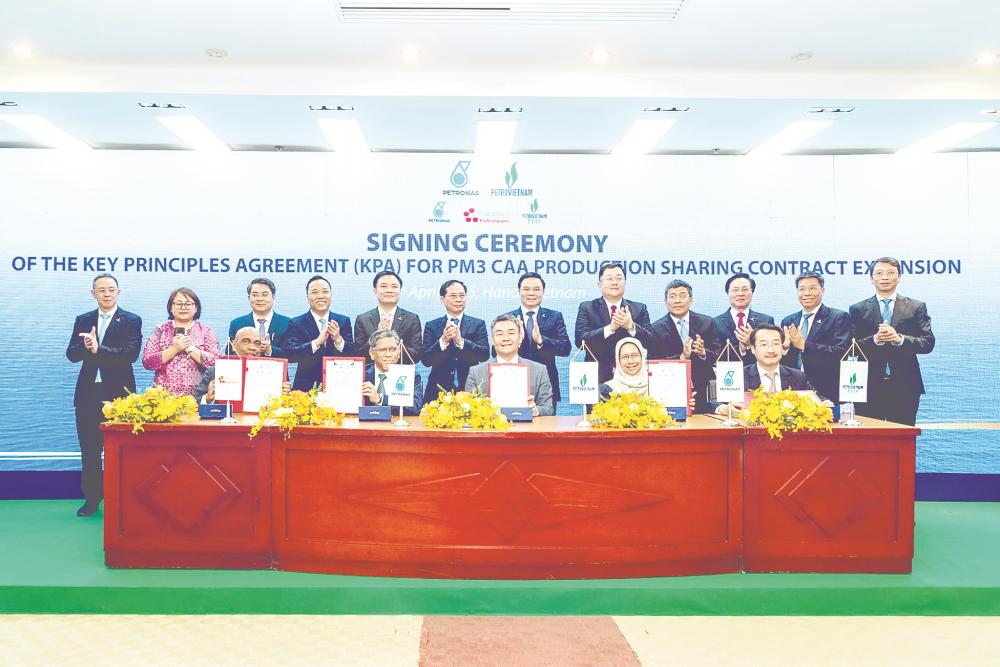KUALA LUMPUR: Petronas, through Malaysia Petroleum Management (MPM), and Vietnam Oil and Gas Group (PetroVietnam) signed a Key Principles Agreement (KPA) to extend the Production Sharing Contract (PSC) and Upstream Gas Sales Agreement (UGSA) for the PM3 Commercial Arrangement Area (CAA) for another 20 years.
Covering more than 2,000km of offshore fields straddling the maritime border of Malaysia and Vietnam, the PM3 CAA is a prime showcase of enduring cross-border collaboration.
This milestone underscores the strong bilateral ties and shared commitment between both countries towards energy security and affordability.
“With an estimated remaining reserve of up to 60 million barrels of oil equivalent (MMBoe), the abundant hydrocarbon resources in PM3 CAA plays a key role in contributing towards sustainable energy security in the region,” Petronas senior vice-president of MPM Datuk Bacho Pilong remarked.
“The agreement underscores the unwavering commitment from both Petronas and PetroVietnam to further enhance their long-term collaboration which has been crucial to the progress of PM3, from exploration, development to eventual monetisation of the resources.”
The KPA sets the framework for the continuation of the PSC and UGSA until Dec 31, 2047, ensuring production continuity across seven fields and unlocking further potential PM3 CAA.
The PM3 CAA PSC facilities are also positioned as a strategic hub to support tie-ins from nearby discoveries – optimising asset utilisation and reinforcing energy security in both Malaysia and Vietnam.
The domestic market UGSA has been structured to maintain the economic viability of future gas field developments.
Key terms for a new UGSA will ensure continued supply to Malaysia via Kertih and to Vietnam via Ca Mau, supporting national energy demands of both countries.
The PM3 CAA is also expected to include plans for the reinjection of carbon dioxide (CO₂) produced from petroleum production activities – positioning the area as a potential hub for CO₂ sequestration.
This approach supports the net-zero aspirations of both countries’ net-zero ambitions by 2050.









